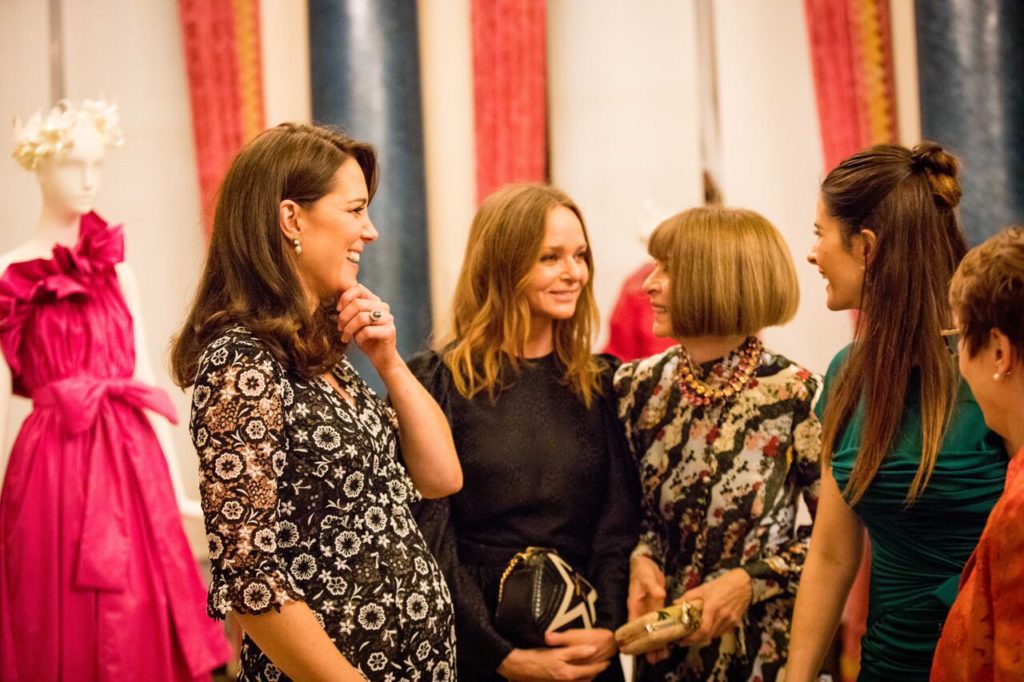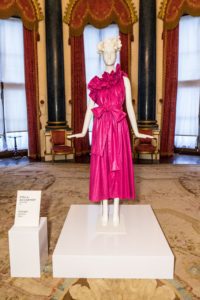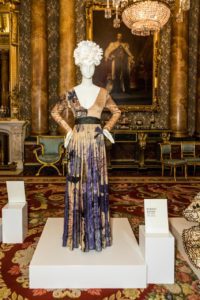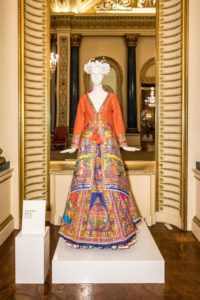Duchesses, princesses, journalists and top models; there were so many last week at Buckingham Palace, all of them rushing to inaugurate ‘The Commonwealth Fashion Exchange’, the eco-fashion exhibition created and managed by Eco-Age, the ethical fashion company owned by the London-based green queen Livia Firth, once Livia Giuggioli, film producer, wife of Colin Firth and passionate supporter of environmental and ethical fashion.

The exhibition showcases 30 eco-friendly haute couture looks created by established and emerging fashion talent from across the Commonwealth’s 53 countries, each of which, in a kind of stylistic twinning, is paired with artisans and materials in a different country from own. Just to name a few: Stella McCartney has used Indian silk, Burberry has created the timeless trench coat with sustainable Australian wool.


‘The Commonwealth Fashion Exchange’ is an ambitious project with long term aims, that is being developed in partnership with Swarovski, The Woolmark Company and MATCHESFASHION.COM and that has been celebrated during the London Fashion Week in order not to turn the spotlight on the sustainable sector of the fashion industry, because, as Livia Firth said, industrial ethics is the basis of progress. The aim of the whole project is indeed to demonstrate that the development of society can only be based on social justice, which translated means respect for the rights of workers and the environment. A challenge that in the fashion industry is very possible, indeed necessary, precisely because its social and economic impact is enormous. We all have to get dressed, Livia Firth pointed out, and if each of us did it ethically, it would be much easier to change things.
Returning to the 30 creations exhibited at Buckingham Palace, it is as if each one were telling their place of origin and the people who made it; the choice of fabrics, colors, combinations and shapes are almost reportage from many corners of the world.


Elegant and sinuous is the long and low-cut dress by Buddhi Batiks, a company that is based in north-western Sri Lanka and that used Seacell™ fabric made from algae and silk which has been hand pleated and batiked by Buddhi Batiks’ team of craft women in the village of Koswadiya, and lined with peace (Ahimsa) silk from India.


The composition of Rizwan Beyg, a Pakistan designer who comes from architecture and who tries to combine the tradition of his country with the artistic innovation of young talents, is a a skirt and coat featuring motifs designed by the ‘truck artists’ of Pakistan (they design colorful motifs inspired by nature, and painted by rural artist), then embroidered by the village women of Bhawalpur.
Inspired by the most recent oil spill in the East China Sea and the destruction caused to our oceans and ecosystems, the gown of the Toronto-based womenswear designer Lucian Matis is made with a wool blend fabric, and embellished with black Swarovski upcycled crystals. To accompany the gown, a classic roll necklace was created by three Ju/’hoansi groups living in the eastern region of Namibia. The method for creating the beads is believed to date back 60,000 years, using ostrich eggshells that are broken in to small pieces, clipped into circles and pierced with a hole.
Another gem: in addition to Livia Firth, to speak Italian in ‘The Commonwealth Fashion Exchange’ there are also the exhibition dummies, made by the Italian company Bonaveri in 100% biodegradable bioplastic (which comes to 72% from sugar cane) and painted with B Paint®, the first natural paint composed exclusively of renewable organic substances.
We will not reveal anymore. Only that the exhibition, born under the aegis of the Commonwealth Fashion Council, non-profit organization that supports the eco-sustainability of the fashion industry, will be open for free until the next 6 March at the Australia House in London, where it moved after the inauguration at Buckingham Palace and then it will move around the various states of the Commonwealth. If you do not have time or opportunity to visit it, you can find it on the Google Arts platform but also on the website of Eco-Age.
Novella Di Paolo


![Mono[PA6] by Freitag, a prova di economia circolare](https://eco-a-porter.com/wp-content/uploads/2024/05/freitag_monopa6_hero_master_16zu9_fin_01.2_0-218x150.jpg)
















